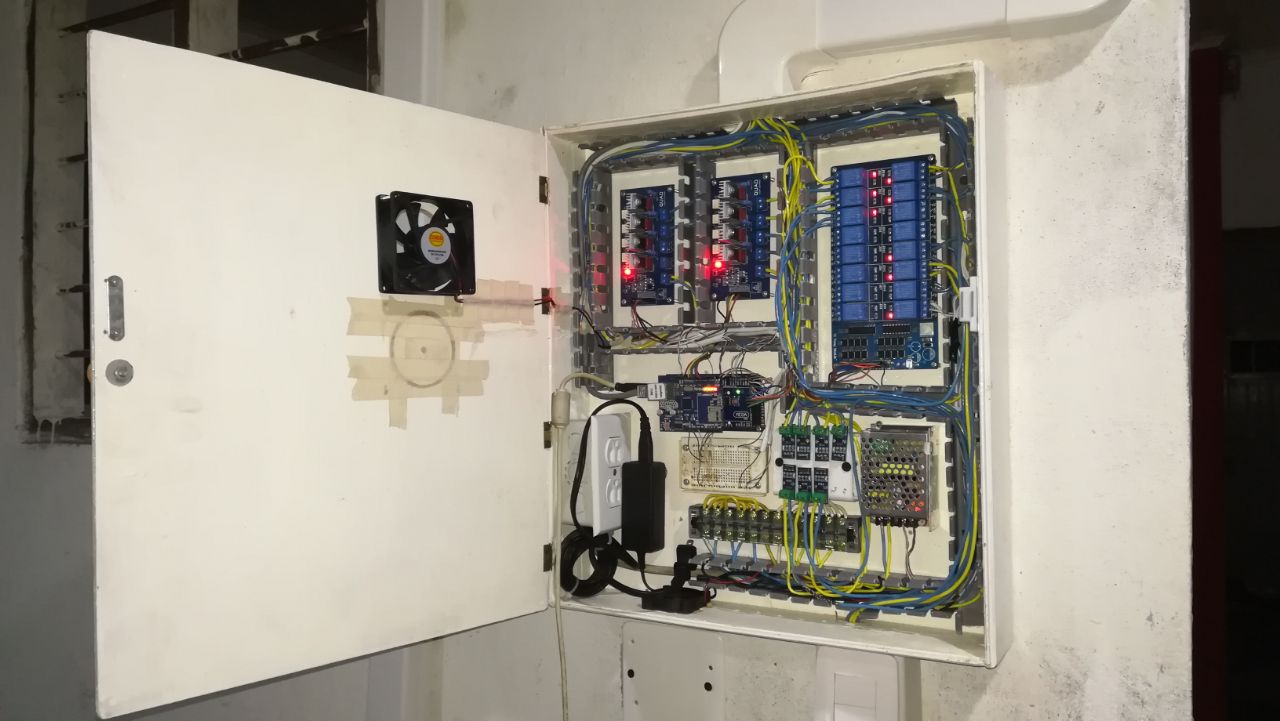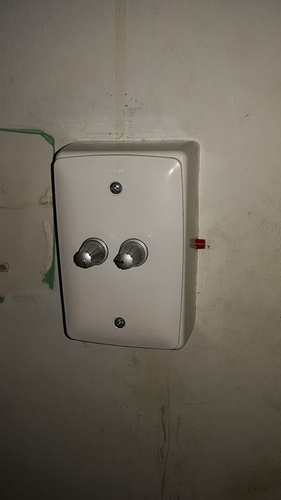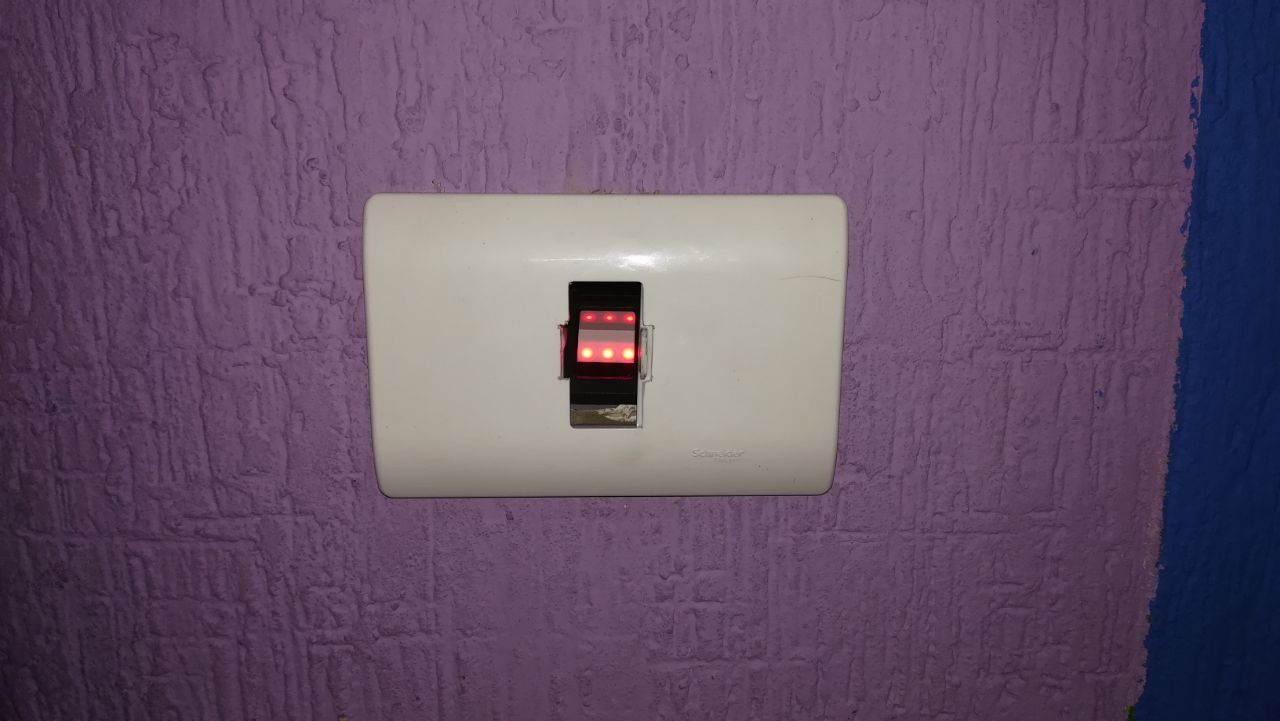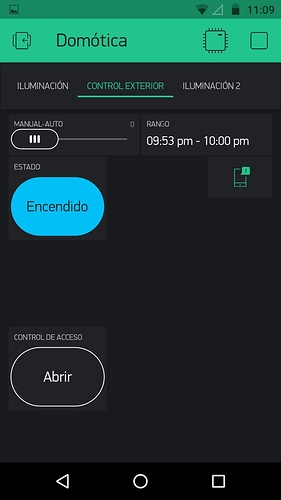Hello everyone, I have the following problem:
I’m doing a degree project that consists of home automation with arduino and I decided to use blynk because it facilitated communication, so I use a mega arduino with a w5100 shield for control, I also have a 16-channel relay module, two voltage regulators 4 channels each, current sensors, rotary encoders, and a fingerprint sensor for opening the main door.
The problem I have at this moment is that the fingerprint sensor does not read my fingerprint with Blynk’s programming, but I do it without Blynk and it works well for me, and I wanted to know what I’m doing wrong, annex images and programming, I hope that can you help me, thank you very much
This is the system that I have done, it is not 100% finished but I have a lot of progress
I can control some lights and fans with this and virtually (sliders)
I have located the fingerprint sensor as well, and I have virtually tested the opening of the door and it works for me.
This is the application on the cell phone (It’s in Spanish because I’m from Colombia xd)
#include <Adafruit_Fingerprint.h>
#define BLYNK_PRINT Serial
#include <SPI.h>
#include <Ethernet.h>
#include <BlynkSimpleEthernet.h>
#include <TimerOne.h> // Avaiable from http://www.arduino.cc/playground/Code/Timer1
#include <SoftwareSerial.h>
#include <WidgetRTC.h>
#include <TimeLib.h>
SoftwareSerial mySerial(10, 11);
Adafruit_Fingerprint finger = Adafruit_Fingerprint(&mySerial);
int fingerprintID = 0;
BlynkTimer timer;
WidgetRTC rtc;
int manual=0;
int x = 0;
char Date[16];
char Time[16];
long startsecondswd; // weekday start time in seconds
long stopsecondswd; // weekday stop time in seconds
long nowseconds; // time now in seconds
int val = 0; //val se emplea para almacenar el estado del boton
int state = 0; // 0 LED apagado, mientras que 1 encendido
int old_val = 0; // almacena el antiguo valor de val
int val2 = 0;
int state2 = 0;
int old_val2 = 0;
int val3 = 0;
int state3 = 0;
int old_val3 = 0;
int val4 = 0;
int state4 = 0;
int old_val4 = 0;
int val5 = 0;
int state5 = 0;
int old_val5 = 0;
int val6 = 0;
int state6 = 0;
int old_val6 = 0;
int val7 = 0;
int state7 = 0;
int old_val7 = 0;
volatile int i=0; // Variable to use as a counter volatile as it is in an interrupt
volatile int j=0;
volatile int k=0;
volatile int l=0;
volatile int m=0;
volatile int n=0;
volatile boolean zero_cross=0; // Boolean to store a "switch" to tell us if we have crossed zero
volatile boolean zero_cross2=0;
volatile boolean zero_cross3=0;
volatile boolean zero_cross4=0;
volatile boolean zero_cross5=0;
volatile boolean zero_cross6=0;
int AC_pin = 3; // Output to Opto Triac
int AC_pin2 = 4;
int AC_pin3 = 5;
int AC_pin4 = 6;
int AC_pin5 = 7;
int AC_pin6 = 8;
int puerta = 14;
int BAfuera = 15;
int pulPuerta = 9;
int rl1 = 34;
int rl2 = 35;
int rl3 = 36;
int rl4 = 37;
int rl5 = 38;
int rl6 = 39;
int rl7 = 40;
int brightness = 0;
int brightness2 = 0;
int brightness3 = 0;
int brightness4 = 0;
int brightness5 = 0;
int brightness6 = 0;
int reading1;
int previous1 = LOW;
int freqStep = 65; // This is the delay-per-brightness step in microseconds.
long time = 0; // the last time the output pin was toggled
long time2 = 0;
long time3 = 0;
long time4 = 0;
long time5 = 0;
long time6 = 0;
long debounce1 = 200;
int reading2;
int previous2 = LOW;
long debounce2 = 200;
int reading3;
int previous3 = LOW;
long debounce3 = 200;
int reading4;
int previous4 = LOW;
long debounce4 = 200;
int reading5;
int previous5 = LOW;
long debounce5 = 200;
int reading6;
int previous6 = LOW;
long debounce6 = 200;
int pinA1 = 16; // Pin digital para el pin CLK del codificador rotatorio
int pinB1 = 17; // Pin digital para el pin DT del codificador rotatorio
int inPin1 = 18; // Pin para el pulsador del encoder
int pinA2 = 19;
int pinB2 = 20;
int inPin2 = 21;
int pinA3 = 22;
int pinB3 = 23;
int inPin3 = 24;
int pinA4 = 25;
int pinB4 = 26;
int inPin4 = 27;
int pinA5 = 28;
int pinB5 = 29;
int inPin5 = 30;
int pinA6 = 31;
int pinB6 = 32;
int inPin6 = 33;
// Variables para el funcionamiento del programa
int valorInicial1 = 0;
int valorActual1 = 0;
boolean horario1;
int valorInicial2 = 0;
int valorActual2 = 0;
boolean horario2;
int valorInicial3 = 0;
int valorActual3 = 0;
boolean horario3;
int valorInicial4 = 0;
int valorActual4 = 0;
boolean horario4;
int valorInicial5 = 0;
int valorActual5 = 0;
boolean horario5;
int valorInicial6 = 0;
int valorActual6 = 0;
boolean horario6;
// You should get Auth Token in the Blynk App.
// Go to the Project Settings (nut icon).
char auth[] = "811ff566ff004ada8fbea476f50c0d31";
#define W5100_CS 10
#define SDCARD_CS 4
void setup()
{
startFingerprintSensor();
//Serial.begin(9600);
rtc.begin();
Blynk.virtualWrite(V1, 0);
// while (!Serial);
// delay(100);
// finger.begin(57600);
pinMode(pinA1, INPUT);
pinMode(pinB1, INPUT);
pinMode(inPin1, INPUT_PULLUP);
pinMode(pinA2, INPUT);
pinMode(pinB2, INPUT);
pinMode(inPin2, INPUT_PULLUP);
pinMode(pinA3, INPUT);
pinMode(pinB3, INPUT);
pinMode(inPin3, INPUT_PULLUP);
pinMode(pinA4, INPUT);
pinMode(pinB4, INPUT);
pinMode(inPin4, INPUT_PULLUP);
pinMode(pinA5, INPUT);
pinMode(pinB5, INPUT);
pinMode(inPin5, INPUT_PULLUP);
pinMode(pinA6, INPUT);
pinMode(pinB6, INPUT);
pinMode(inPin6, INPUT_PULLUP);
pinMode(pulPuerta, INPUT);
valorInicial1 = digitalRead(pinA1);
valorInicial2 = digitalRead(pinA2);
valorInicial3 = digitalRead(pinA3);
valorInicial4 = digitalRead(pinA4);
valorInicial5 = digitalRead(pinA5);
valorInicial6 = digitalRead(pinA6);
pinMode(puerta, OUTPUT);
pinMode(BAfuera, OUTPUT);
pinMode(rl1, OUTPUT);
pinMode(rl2, OUTPUT);
pinMode(rl3, OUTPUT);
pinMode(rl4, OUTPUT);
pinMode(rl5, OUTPUT);
pinMode(rl6, OUTPUT);
pinMode(rl7, OUTPUT);
pinMode(AC_pin, OUTPUT);
pinMode(AC_pin2, OUTPUT);
pinMode(AC_pin3, OUTPUT);
pinMode(AC_pin4, OUTPUT);
pinMode(AC_pin5, OUTPUT);
pinMode(AC_pin6, OUTPUT);
pinMode(SDCARD_CS, OUTPUT);
digitalWrite(SDCARD_CS, HIGH); // Deselect the SD card
Blynk.begin(auth, IPAddress(192,168,1,24), 8080);
attachInterrupt(0, zero_cross_detect, RISING); // Attach an Interupt to Pin 2 (interupt 0)
Timer1.initialize(freqStep); // Initialize TimerOne library
Timer1.attachInterrupt(dim_check, freqStep);
timer.setInterval(10000L, syncRelay);
}
BLYNK_WRITE(V10)// slider brillo1 (Luz Sala)
{
int brillo = param.asInt();
brightness=brillo;
}
BLYNK_WRITE(V11)// slider brillo2 (Ven. Sala)
{
int brillo2 = param.asInt();
brightness2=brillo2;
}
BLYNK_WRITE(V12)// slider brillo3 (Luz Cuarto2)
{
int brillo3 = param.asInt();
brightness3=brillo3;
}
BLYNK_WRITE(V13)// slider brillo4 (Ven. Cuarto2)
{
int brillo4 = param.asInt();
brightness4=brillo4;
}
BLYNK_WRITE(V14)// slider brillo5 (Luz Cuarto3)
{
int brillo5 = param.asInt();
brightness5=brillo5;
}
BLYNK_WRITE(V15)// slider brillo6 (Ven. Cuarto3)
{
int brillo6 = param.asInt();
brightness6=brillo6;
}
BLYNK_WRITE(V16)// Boton virtual para puerta
{
int Valorpin = param.asInt();
if (Valorpin == HIGH)
{
digitalWrite(puerta, HIGH);
}
else
{
digitalWrite(puerta,LOW);
}
}
BLYNK_WRITE(V17)
{
int Valorpin = param.asInt();
if ((Valorpin == 1) && (old_val == 0)){
state=1-state;
delay(10);
}
old_val = val; // valor del antiguo estado
if (state==1){
digitalWrite(rl1, HIGH);
Blynk.virtualWrite(V24, 255);}
else{
digitalWrite(rl1,LOW);
Blynk.virtualWrite(V24, 0);
}
}
BLYNK_WRITE(V18)
{
int Valorpin2 = param.asInt();
if ((Valorpin2 == 1) && (old_val2 == 0)){
state2=1-state2;
delay(10);
}
old_val2 = val2; // valor del antiguo estado
if (state2==1){
digitalWrite(rl2, HIGH);
Blynk.virtualWrite(V25, 255);}
else{
digitalWrite(rl2,LOW);
Blynk.virtualWrite(V25, 0);
}
}
BLYNK_WRITE(V19)
{
int Valorpin3 = param.asInt();
if ((Valorpin3 == 1) && (old_val3 == 0)){
state3=1-state3;
delay(10);
}
old_val3 = val3; // valor del antiguo estado
if (state3==1){
digitalWrite(rl3, HIGH);
Blynk.virtualWrite(V26, 255);}
else{
digitalWrite(rl3,LOW);
Blynk.virtualWrite(V26, 0);
}
}
BLYNK_WRITE(V20)
{
int Valorpin4 = param.asInt();
if ((Valorpin4 == 1) && (old_val4 == 0)){
state4=1-state4;
delay(10);
}
old_val4 = val4; // valor del antiguo estado
if (state4==1){
digitalWrite(rl4, HIGH);
Blynk.virtualWrite(V27, 255);}
else{
digitalWrite(rl4,LOW);
Blynk.virtualWrite(V27, 0);
}
}
BLYNK_WRITE(V21)
{
int Valorpin5 = param.asInt();
if ((Valorpin5 == 1) && (old_val5 == 0)){
state5=1-state5;
delay(10);
}
old_val5 = val5; // valor del antiguo estado
if (state5==1){
digitalWrite(rl5, HIGH);
Blynk.virtualWrite(V28, 255);}
else{
digitalWrite(rl5,LOW);
Blynk.virtualWrite(V28, 0);
}
}
BLYNK_WRITE(V22)
{
int Valorpin6 = param.asInt();
if ((Valorpin6 == 1) && (old_val6 == 0)){
state6=1-state6;
delay(10);
}
old_val6 = val6; // valor del antiguo estado
if (state6==1){
digitalWrite(rl6, HIGH);
Blynk.virtualWrite(V29, 255);}
else{
digitalWrite(rl6,LOW);
Blynk.virtualWrite(V29, 0);
}
}
BLYNK_WRITE(V23)
{
int Valorpin7 = param.asInt();
if ((Valorpin7 == 1) && (old_val7 == 0)){
state7=1-state7;
delay(10);
}
old_val7 = val7; // valor del antiguo estado
if (state7==1){
digitalWrite(rl7, HIGH);
Blynk.virtualWrite(V30, 255);}
else{
digitalWrite(rl7,LOW);
Blynk.virtualWrite(V30, 0);
}
}
BLYNK_WRITE(V1)//Slider Automático - Manual (Afuera)
{
if (param.asInt()==1)
{
manual=1;
}
else
{
manual=0;
}
}
BLYNK_WRITE(V2)// Tiempo para encender (Afuera)
{
if (manual==1)
{
sprintf(Date, "%02d/%02d/%04d", day(), month(), year());
sprintf(Time, "%02d:%02d:%02d", hour(), minute(), second());
TimeInputParam t(param);
//Serial.println(Time);
//Serial.println(Date);
int dayadjustment = -1;
if(weekday() == 1){
dayadjustment = 6; // needed for Sunday, Time library is day 1 and Blynk is day 7
}
if(t.isWeekdaySelected (weekday() + dayadjustment)){ //Time library starts week on Sunday, Blynk on Monday
nowseconds = ((hour() * 60) + (minute()));
startsecondswd = ((t.getStartHour() * 60) + (t.getStartMinute()));
//Serial.println(nowseconds);
//Serial.println(startsecondswd); // used for debugging
if(nowseconds >= startsecondswd){
if(nowseconds <= startsecondswd){ // 90s on 60s timer ensures 1 trigger command is sent
Blynk.virtualWrite(V3, 1);
// code here to switch the relay ON
}
}
else
{
}
stopsecondswd = (t.getStopHour() * 60) + (t.getStopMinute());
//Serial.println(stopsecondswd); // used for debugging
if(nowseconds >= stopsecondswd){
Blynk.virtualWrite(V3, 0);
if(nowseconds <= stopsecondswd){ // 90s on 60s timer ensures 1 trigger command is sent
Blynk.virtualWrite(V3, 0);
// code here to switch the relay OFF
}
}
else{
if(nowseconds >= startsecondswd){
Blynk.virtualWrite(V3, 1);
}
}
}
else
{
// nothing to do today, check again in 30 SECONDS time
}
}
}
BLYNK_WRITE(V3)// Boton
{
x = param.asInt();
}
void syncRelay()
{
Blynk.syncAll();
}
void zero_cross_detect() {
zero_cross = true;
zero_cross2 = true;
zero_cross3 = true;
zero_cross4 = true;
zero_cross5 = true;
zero_cross6 = true;
i=0;
j=0;
k=0;
l=0;
m=0;
n=0;
digitalWrite(AC_pin, LOW); // turn off TRIAC (and AC)
digitalWrite(AC_pin2, LOW);
digitalWrite(AC_pin3, LOW);
digitalWrite(AC_pin4, LOW);
digitalWrite(AC_pin5, LOW);
digitalWrite(AC_pin6, LOW);
}
// Turn on the TRIAC at the appropriate time
void dim_check() {
if(zero_cross == true) {
if(i>=brightness) {
digitalWrite(AC_pin, HIGH); // turn on light
i=0; // reset time step counter
zero_cross = false; //reset zero cross detection
}
else {
i++; // increment time step counter
}
}
if(zero_cross2 == true) {
if(j>=brightness2) {
digitalWrite(AC_pin2, HIGH); // turn on light
j=0; // reset time step counter
zero_cross2 = false; //reset zero cross detection
}
else {
j++; // increment time step counter
}
}
if(zero_cross3 == true) {
if(k>=brightness3) {
digitalWrite(AC_pin3, HIGH); // turn on light
k=0; // reset time step counter
zero_cross3 = false; //reset zero cross detection
}
else {
k++; // increment time step counter
}
}
if(zero_cross4 == true) {
if(l>=brightness4) {
digitalWrite(AC_pin4, HIGH); // turn on light
l=0; // reset time step counter
zero_cross4 = false; //reset zero cross detection
}
else {
l++; // increment time step counter
}
}
if(zero_cross5 == true) {
if(m>=brightness5) {
digitalWrite(AC_pin5, HIGH); // turn on light
m=0; // reset time step counter
zero_cross5 = false; //reset zero cross detection
}
else {
m++; // increment time step counter
}
}
if(zero_cross6 == true) {
if(n>=brightness6) {
digitalWrite(AC_pin6, HIGH); // turn on light
n=0; // reset time step counter
zero_cross6 = false; //reset zero cross detection
}
else {
n++; // increment time step counter
}
}
}
void Afuera(){
if (x == 1)
{
digitalWrite(BAfuera, HIGH);
//Blynk.notify("Se encendió la iluminación exterior");
//delay(1000);
}
else if (x == 0)
{
digitalWrite(BAfuera, LOW);
}
}
void loop()
{
Blynk.run();
timer.run();
Afuera();
Encoder1();
Encoder2();
Encoder3();
Encoder4();
Encoder5();
Encoder6();
pulEncoder1();
pulEncoder2();
pulEncoder3();
pulEncoder4();
pulEncoder5();
pulEncoder6();
//BotonPuerta();
//getFingerprintIDez();
fingerprintID = getFingerprintID();
//delay(50);
if(fingerprintID > 0) //Dan
{
digitalWrite(puerta , HIGH);
delay(100);
digitalWrite(puerta , LOW);
}
//--------------------------------------------------------------------------------------
}
int getFingerprintID() {
uint8_t p = finger.getImage();
if (p != FINGERPRINT_OK) return -1;
p = finger.image2Tz();
if (p != FINGERPRINT_OK) return -1;
p = finger.fingerFastSearch();
if (p != FINGERPRINT_OK) return -1;
return finger.fingerID;
}
void BotonPuerta(){
int lec1 = digitalRead(pulPuerta); // lee el estado del Boton
if (lec1 == HIGH){
digitalWrite(puerta, HIGH);
delay(100);
digitalWrite(puerta,LOW);
}
}
void Encoder1(){
// Encoder 1
valorActual1 = digitalRead(pinA1);
if (valorActual1 != valorInicial1)
{
if (digitalRead(pinB1) != valorActual1)
{
if(brightness < 130)
{
brightness=brightness+10;
}
horario1 = true;
}
else
{
if(brightness > 0)
{
brightness=brightness-10;
}
horario1 = false;
}
Blynk.virtualWrite(V10, brightness);
}
valorInicial1 = valorActual1;
}
void pulEncoder1(){
reading1 = digitalRead(inPin1);
if (reading1 == HIGH && previous1 == LOW && millis() - time > debounce1) {
if (brightness <= 125)
brightness = 130;
else
brightness = 0;
time = millis();
Blynk.virtualWrite(V10, brightness);
}
previous1 = reading1;
}
void Encoder2(){
//-----------------------------------------------------------------------------------
// Encoder 2
valorActual2 = digitalRead(pinA2);
if (valorActual2 != valorInicial2)
{
if (digitalRead(pinB2) != valorActual2)
{
if(brightness2 < 130)
{
brightness2=brightness2+10;
}
horario2 = true;
}
else
{
if(brightness2 > 0)
{
brightness2=brightness2-10;
}
horario2 = false;
}
Blynk.virtualWrite(V11, brightness2);
}
valorInicial2 = valorActual2;
}
void pulEncoder2(){
reading2 = digitalRead(inPin2);
if (reading2 == HIGH && previous2 == LOW && millis() - time2 > debounce2) {
if (brightness2 <= 125)
brightness2 = 130;
else
brightness2 = 0;
time2 = millis();
Blynk.virtualWrite(V11, brightness2);
}
previous2 = reading2;
}
void Encoder3(){
// Encoder 3
valorActual3 = digitalRead(pinA3);
if (valorActual3 != valorInicial3)
{
if (digitalRead(pinB3) != valorActual3)
{
if(brightness3 < 130)
{
brightness3=brightness3+10;
}
horario3 = true;
}
else
{
if(brightness3 > 0)
{
brightness3=brightness3-10;
}
horario3 = false;
}
Blynk.virtualWrite(V12, brightness3);
}
valorInicial3 = valorActual3;
}
void pulEncoder3(){
reading3 = digitalRead(inPin3);
if (reading3 == HIGH && previous3 == LOW && millis() - time3 > debounce3) {
if (brightness3 <= 125)
brightness3 = 130;
else
brightness3 = 0;
time3 = millis();
Blynk.virtualWrite(V12, brightness3);
}
previous3 = reading3;
}
void Encoder4(){
// Encoder 4
valorActual4 = digitalRead(pinA4);
if (valorActual4 != valorInicial4)
{
if (digitalRead(pinB4) != valorActual4)
{
if(brightness4 < 130)
{
brightness4=brightness4+10;
}
horario4 = true;
}
else
{
if(brightness4 > 0)
{
brightness4=brightness4-10;
}
horario4 = false;
}
Blynk.virtualWrite(V13, brightness4);
}
valorInicial4 = valorActual4;
}
void pulEncoder4(){
reading4 = digitalRead(inPin4);
if (reading4 == HIGH && previous4 == LOW && millis() - time4 > debounce4) {
if (brightness4 <= 125)
brightness4 = 130;
else
brightness4 = 0;
time4 = millis();
Blynk.virtualWrite(V13, brightness4);
}
previous4 = reading4;
}
void Encoder5(){
// Encoder 5
valorActual5 = digitalRead(pinA5);
if (valorActual5 != valorInicial5)
{
if (digitalRead(pinB5) != valorActual5)
{
if(brightness5 < 130)
{
brightness5=brightness5+10;
}
horario5 = true;
}
else
{
if(brightness5 > 0)
{
brightness5=brightness5-10;
}
horario5 = false;
}
Blynk.virtualWrite(V14, brightness5);
}
valorInicial5 = valorActual5;
}
void pulEncoder5(){
reading5 = digitalRead(inPin5);
if (reading5 == HIGH && previous5 == LOW && millis() - time5 > debounce5) {
if (brightness5 <= 125)
brightness5 = 130;
else
brightness5 = 0;
time5 = millis();
Blynk.virtualWrite(V14, brightness5);
}
previous5 = reading5;
}
void Encoder6(){
// Encoder 6
valorActual6 = digitalRead(pinA6);
if (valorActual6 != valorInicial6)
{
if (digitalRead(pinB6) != valorActual6)
{
if(brightness6 < 130)
{
brightness6=brightness6+10;
}
horario6 = true;
}
else
{
if(brightness6 > 0)
{
brightness6=brightness6-10;
}
horario6 = false;
}
Blynk.virtualWrite(V15, brightness6);
}
valorInicial6 = valorActual6;
}
void pulEncoder6(){
reading6 = digitalRead(inPin6);
if (reading6 == HIGH && previous6 == LOW && millis() - time6 > debounce6) {
if (brightness6 <= 125)
brightness6 = 130;
else
brightness6 = 0;
time6 = millis();
Blynk.virtualWrite(V15, brightness6);
}
previous6 = reading6;
}
void startFingerprintSensor()
{
Serial.begin(9600);
while (!Serial);
finger.begin(57600);
if (finger.verifyPassword()) {
Serial.println("Found fingerprint sensor!");
} else {
Serial.println("Did not find fingerprint sensor");
}
Serial.println("Waiting for valid finger...");
}
This is the programming (it’s a bit long)
I appreciate your help, thanks.





